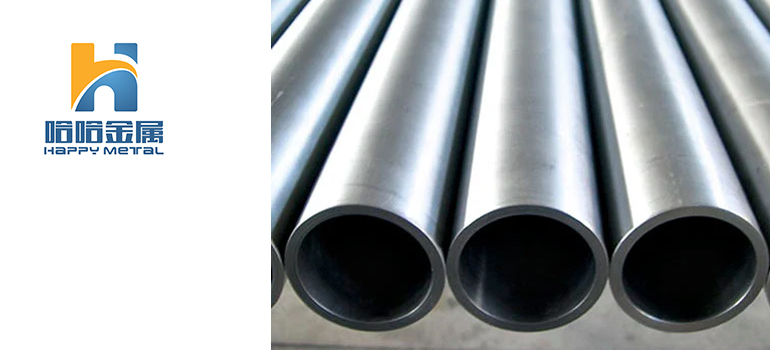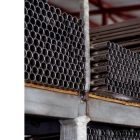Summary:
Everything You Need To Know About Duplex Stainless Steel
What is Duplex Stainless Steel?
Characteristics of Duplex Stainless Steel
History of Duplex Stainless Steel
What Is Duplex Stainless Steel Used For?
Get ready to discover the power of duplex stainless steel. This durable material is a game-changer in many industries, from oil and gas to water treatment and everything in between. With its superior corrosion resistance and high strength, it’s no wonder it is popular. In this article, we’ll explore the fascinating history of this metal, dive into its impressive characteristics, and reveal the most widely-used applications of this product.
What is Duplex Stainless Steel?
Simply put, it’s a member of the stainless steel family with two metallic phases, austenitic and ferritic, in roughly equal ratios. The austenitic phase helps the metal stay malleable for welding, while the ferritic phase provides high strength and corrosion resistance.
Variations
Compared to regular stainless steel, the duplex version has more chromium and less nickel and molybdenum, which makes it more affordable. There are three groups of duplex stainless steel which are based on how well they resist corrosion.
- Standard Duplex:
- This is the most widely-used type.
- Super Duplex:
- This was developed to meet the demands of the oil, gas, and chemical industries.
- Lean Duplex:
- This is used for less-demanding industries like building and construction.
Chemical Composition
Chemical composition varies by grade. The variations in corrosion resistance are a result of different amounts of the following elements:
- Chromium
- Nickel
- Molybdenum
- Tungsten
- Nitrogen
- Copper
- Manganese (lean duplex only)
Under a microscope, you can see the dual-phase microstructure of this material. The two phases swirl together like a marbled cake. The austenitic phase has a bright whiteish color, and the ferritic phase is darker with a matte finish.
Next, we’ll explore the characteristics of this material that result from this unique chemical composition.
Characteristics of Duplex Stainless Steel
Duplex stainless steel has several traits that make it stand out among other types of steel. Thanks to the following characteristics, duplex steel has grown more popular in the global steel market over the past several years.
Corrosion & Temperature Resistance
As you’ve likely picked up by now, corrosion resistance is a huge part of why this metal is so significant. This quality helps it survive in harsh environments. Decay and rust typically result from elements like water, salt, and acid, but the chromium content in duplex steel prevents it.
Also, it has good resistance to both high and low-temperature environments. In fact, most duplex steels can withstand temperatures up to 600°C (1112°F) and down to -50°C (-58°F).
Strength
Toughness means duplex steel can withstand high impacts without losing structural integrity. It also has high mechanical strength, which makes it ideal for industries that require high-stress and load-bearing applications. The steel is less likely to crack under pressure or from corrosion.
Weldability
It’s easily weldable, which allows welders to create complex structures like the following:
- Tubes
- Fittings
- Pumps
- Valves
- Welding Wires
Affordability
It’s often more cost-effective than other high-performance alloys. But how is this possible when this metal has so many advantages over other steels? There are several reasons.
First, it has a lower nickel content, which is a more expensive element in the alloying world. Second, it lasts longer, resulting in fewer replacement or maintenance costs. Third, it has lower manufacturing costs since it’s relatively easy to create. And finally, this type of steel is widely available, so the prices are competitive.
Now that you’re well-educated on the characteristics of this powerful steel, it’s time to explore its history.
History of Duplex Stainless Steel
Duplex steel was first created in the 1930s. In the 1970s, it went commercial. It was first called “Avesta Sheffield 2205,” developed by Avesta Jernverk of Sweden and Sheffield Steel of the UK.
They developed this material because there was a need for an alloy that could survive in the extreme conditions of the oil and gas industry. At the time, materials like carbon steel and austenitic stainless steel were common, but they would rust and crack in harsh environments.
This new stainless steel, with its high corrosion resistance and strength compared to other materials, was an ideal choice for use in offshore oil rigs and ocean pipelines.
Over the years, the development of duplex stainless steel continued. To this day, new alloys are being introduced with even better performance in certain areas.
What Is Duplex Stainless Steel Used For?
Next, we’ll expand on the main uses of this incredible alloy. Some common uses include the following:
Chemical Processing
Chemical processing equipment includes reactors, heat exchangers, and storage tanks. Acids and other corrosive chemicals can quickly destroy regular stainless steel, but the duplex variety handles these chemicals well.
Oil And Gas Production
The oil and gas industry requires below-the-surface pipelines, offshore platforms, and other components that are constantly exposed to high pressures and corrosive substances. Duplex steel can withstand these harsh offshore environments.
Water Treatment
Due to its excellent corrosion resistance, this durable steel is used in water treatment facilities for pipes, pumps, tanks, and other components. Water treatment plants use chlorides and other chemicals to purify water, so an appropriate material must be used to prevent frequent wear and tear.
Structural Applications
Bridges and buildings require materials that have superior strength and mechanical toughness, which is exactly what duplex steel offers.
Food Processing
The food processing industry needs strong and sturdy equipment, such as tanks, mixers, and conveyors. This type of steel is perfect because it resists decay from acidic and alkaline food products.
Marine Applications
Duplex stainless steel is widely used in marine applications, such as boat propellers, shafts, and fittings. That’s because it has excellent resistance to seawater corrosion.
In conclusion, stainless steel is “duplex” when it contains both austenitic and ferritic phases. This chemical composition provides it with ideal mechanical properties and corrosion resistance. Its qualities make it a good fit for many uses, from chemical processing to marine applications. With so many benefits, this durable material will surely continue to play a key role in global industries for years to come.




